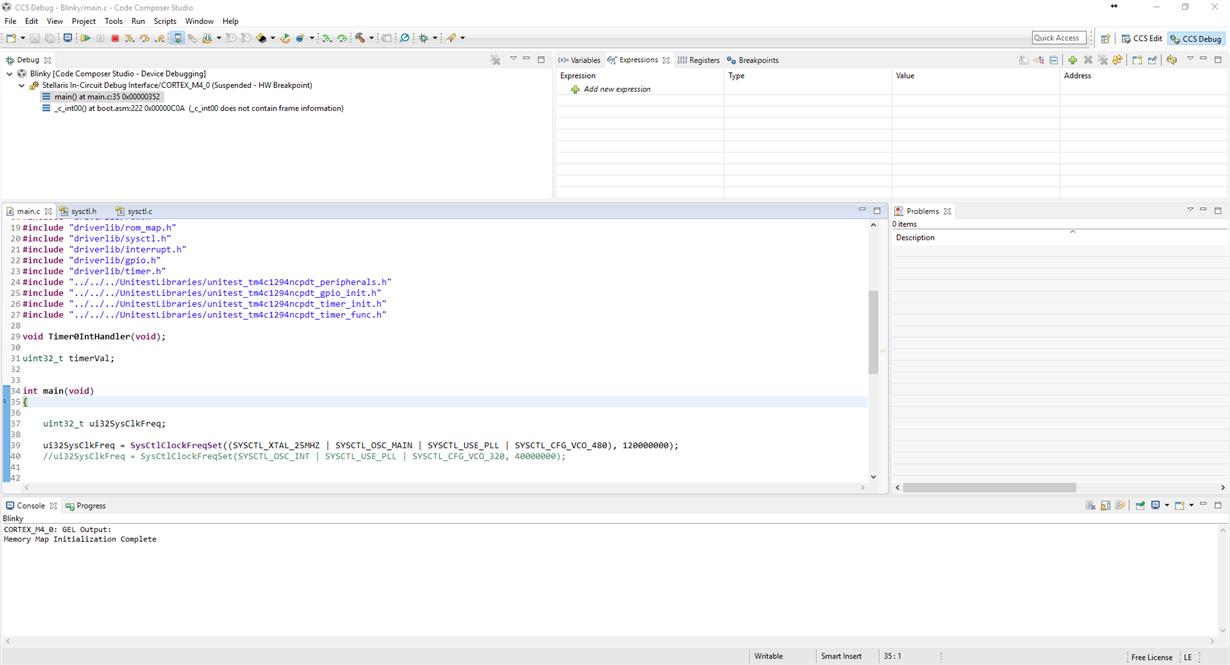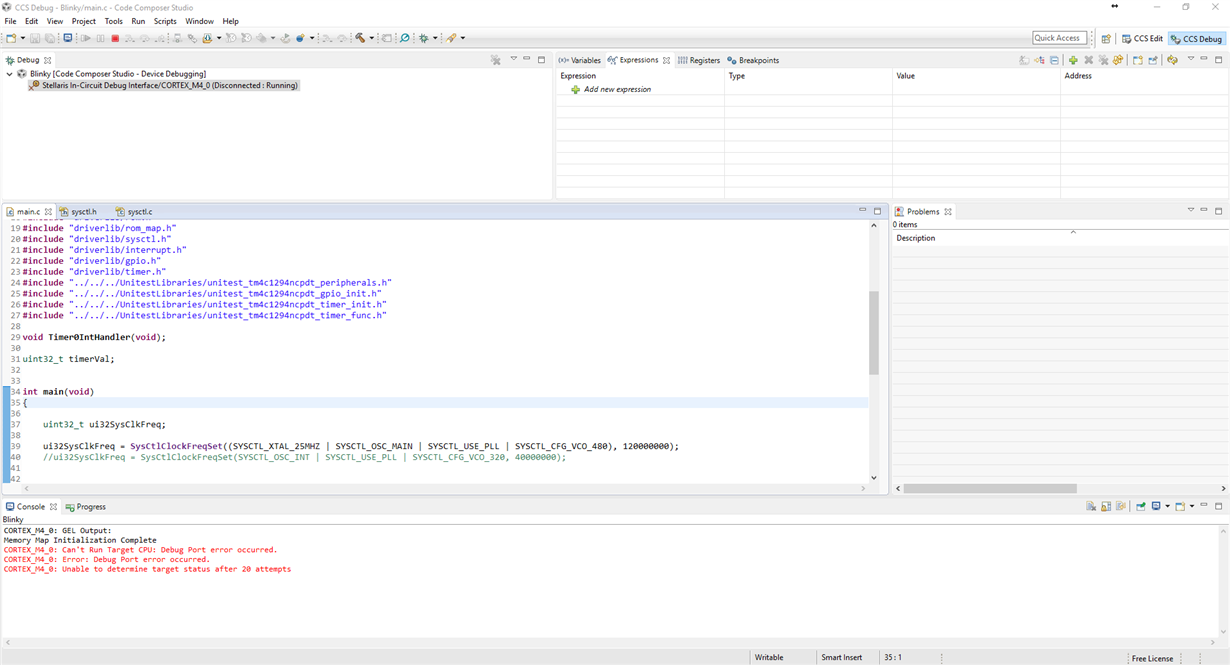Hello all,
I'm using TivaWare_C_Series-2.1.0.12573, with CCS6.1.0. My code is just a simple blinky code I have writen for the custom board:
#include <stdint.h>
#include <stdbool.h>
#include "inc/tm4c1294ncpdt.h"
#include "inc/hw_memmap.h"
#include "inc/hw_types.h"
#include "driverlib/rom.h"
#include "driverlib/rom_map.h"
#include "driverlib/sysctl.h"
#include "driverlib/interrupt.h"
#include "driverlib/gpio.h"
#include "driverlib/timer.h"
#include "../../../UnitestLibraries/unitest_tm4c1294ncpdt_peripherals.h"
#include "../../../UnitestLibraries/unitest_tm4c1294ncpdt_gpio_init.h"
#include "../../../UnitestLibraries/unitest_tm4c1294ncpdt_timer_init.h"
#include "../../../UnitestLibraries/unitest_tm4c1294ncpdt_timer_func.h"
void Timer0IntHandler(void);
uint32_t timerVal;
int main(void)
{
uint32_t ui32SysClkFreq;
ui32SysClkFreq = SysCtlClockFreqSet(SYSCTL_OSC_INT | SYSCTL_USE_PLL | SYSCTL_CFG_VCO_320, 40000000);
//ui32SysClkFreq = SysCtlClockFreqSet((SYSCTL_XTAL_25MHZ | SYSCTL_OSC_MAIN | SYSCTL_USE_PLL | SYSCTL_CFG_VCO_480), 120000000);
//SYSCTL_OSC_INT
initGPIOKOutput(GPIO_PIN_0|GPIO_PIN_1, 0x00);
init32BitTIMERPeriodicMode(SYSCTL_PERIPH_TIMER0, TIMER0_BASE, time2TimerLoadbySysClk(ui32SysClkFreq, 0.5, 0)); // 2ms
interruptInitTIMER(INT_TIMER0A, TIMER0_BASE, TIMER_A, TIMER_TIMA_TIMEOUT, Timer0IntHandler);
IntMasterEnable();
MAP_TimerEnable(TIMER0_BASE, TIMER_A);
while(1);
}
void Timer0IntHandler(void)
{
// Clear the timer interrupt
TimerIntClear(TIMER0_BASE, TIMER_TIMA_TIMEOUT);
// Read the current state of the GPIO pin and
// write back the opposite state
if(GPIOPinRead(GPIO_PORTK_BASE, GPIO_PIN_0))
{
GPIOPinWrite(GPIO_PORTK_BASE, GPIO_PIN_0|GPIO_PIN_1, 0);
}
else
{
GPIOPinWrite(GPIO_PORTK_BASE, GPIO_PIN_0|GPIO_PIN_1, 1);
}
}
The issue is that when I am using the internal oscillator I can embed the code and no problem appears. But when I switch the code from internal oscillator to 25 MHz crystal, I can embed the code but the MCU gets locked. I have to go through an erase procedure to contect to the chip. I am using the recomended crystals (which is exactly the same as the crystal used in the Tiva connected board.) and I also have the RBIAS resistor connected.
I haven't been able to find the source of the error, and would be happy if someone could help out.



